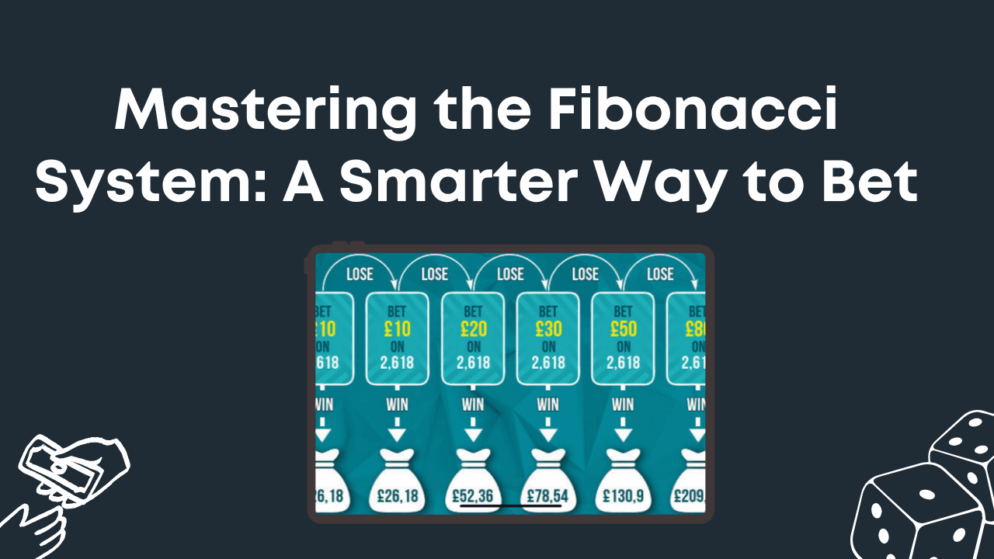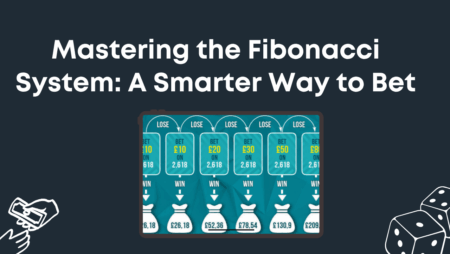

The world of betting strategies is filled with systems promising to beat the odds, but few have the mathematical elegance of the Fibonacci sequence. Named after the Italian mathematician Leonardo Fibonacci, this progressive betting system has gained popularity among gamblers seeking a more structured approach to risk management. But does it truly offer a smarter way to bet, or is it just another mathematical mirage?
Understanding the Fibonacci Sequence
The Fibonacci sequence begins with 0 and 1, with each subsequent number being the sum of the two preceding ones: 0, 1, 1, 2, 3, 5, 8, 13, 21, 34, 55, and so on. In betting, this translates to a progressive system where you increase your wager following this pattern after each loss, returning to the beginning after a win.
How the Fibonacci Betting System Works
The system is surprisingly straightforward. You start with a base unit (let’s say $1) and follow the sequence. If you lose your first bet of $1, your next bet becomes $1 again. Lose that, and your third bet is $2, then $3, $5, $8, and so forth. When you finally win, you move back two positions in the sequence and continue from there.
For example, if you’re at position 8 in the sequence (betting $21) and win, you’d move back to position 6 (betting $8) for your next wager. This backward movement is what makes the Fibonacci system unique among progressive betting strategies.
The Theoretical Appeal
Proponents argue that the Fibonacci system offers several advantages over other progressive strategies. Unlike the aggressive Martingale system, which doubles bets after losses, Fibonacci increases more gradually, theoretically reducing the risk of catastrophic losses. The system also allows for recovery even when you don’t win immediately, as a single win can recoup multiple previous losses depending on your position in the sequence.
The mathematical beauty lies in its self-correcting nature. Because you move back two positions after a win, you’re essentially “banking” progress toward overall profitability even during losing streaks.
The Reality Check
However, the Fibonacci system isn’t immune to the fundamental mathematics of gambling. Like all progressive betting systems, it cannot overcome the house edge that exists in casino games. While it may provide better bankroll management than more aggressive systems, it still relies on the gambler’s fallacy – the mistaken belief that past results affect future probabilities.
The system’s main weakness becomes apparent during extended losing streaks. While increases are more gradual than Martingale, they still compound quickly. By the time you reach the 15th position in the sequence, you’re betting 610 units, which can quickly exhaust even substantial bankrolls.
Practical Considerations
If you choose to experiment with the Fibonacci system, strict bankroll management becomes crucial. Financial experts suggest never risking more than 1-2% of your total gambling budget on any single bet. This means having a bankroll large enough to weather potentially long losing streaks.
The system works best with even-money bets like red/black in roulette or pass/don’t pass in craps, where the odds are closest to 50/50. However, even these bets carry a house edge that no betting system can eliminate.
The Bottom Line
The Fibonacci betting system offers a more conservative approach to progressive betting, with mathematical elegance that appeals to many gamblers. While it may provide better risk management than more aggressive systems, it’s important to remember that no betting system can guarantee profits or overcome the house edge.
Smart betting ultimately comes down to understanding that gambling should be viewed as entertainment rather than investment. If you choose to use the Fibonacci system, do so with realistic expectations, strict limits, and money you can afford to lose. The most intelligent bet might be knowing when not to bet at all.





